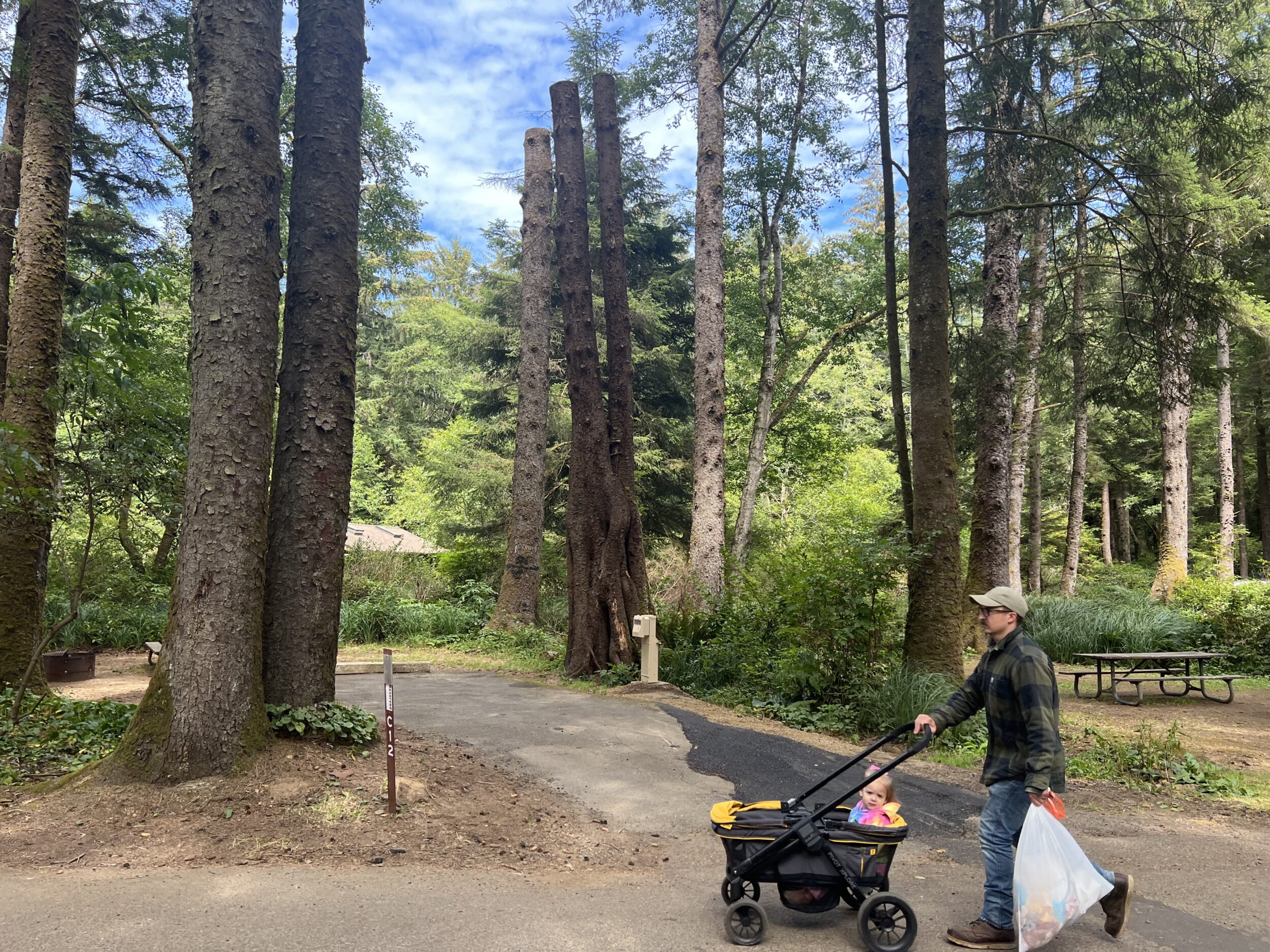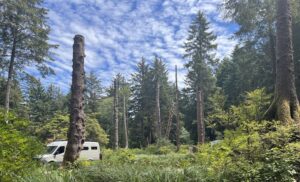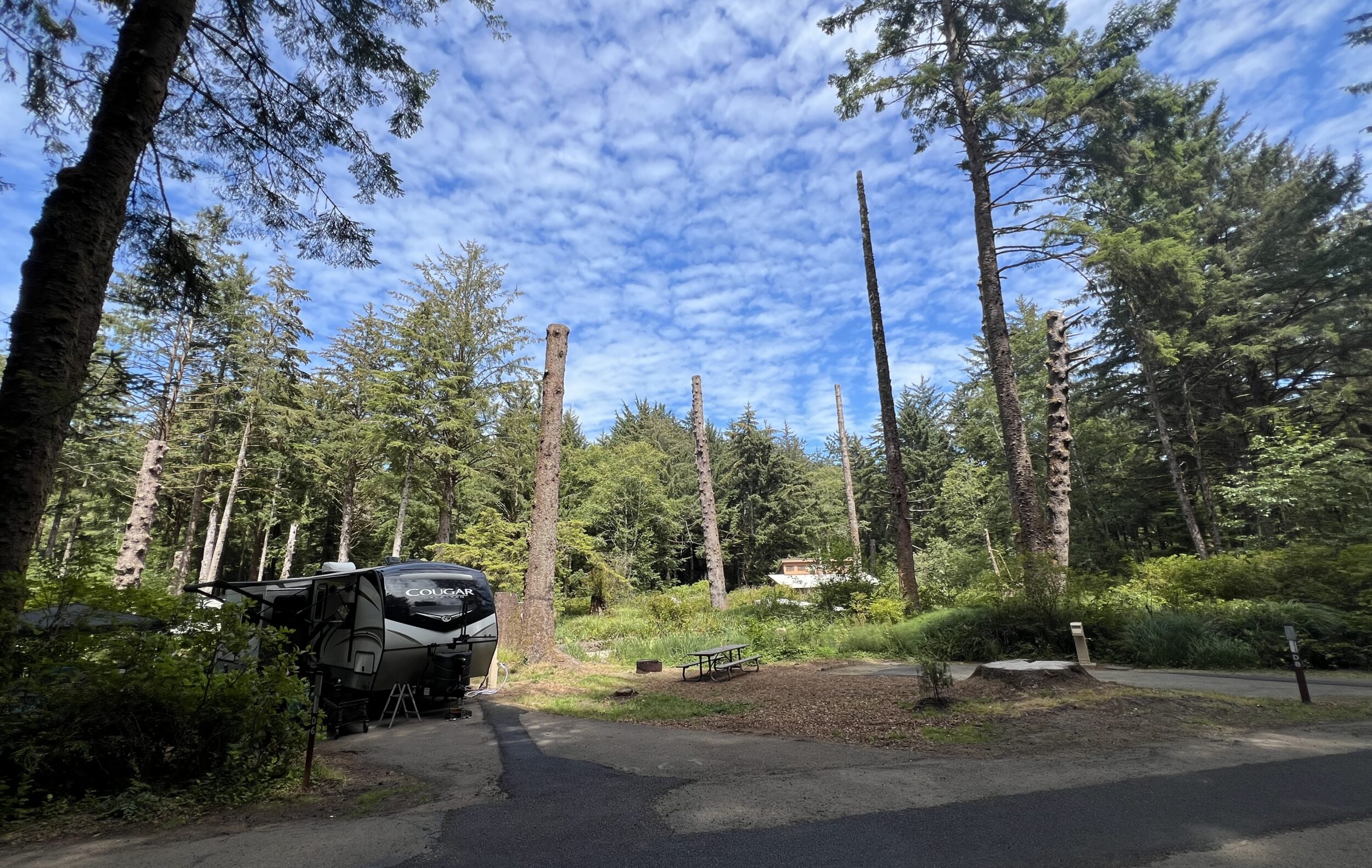
By APRIL EHRLICH/Oregon Public Broadcasting
For years, the towering spruce trees at Beverly Beach State Park just north of Newport have been getting sick and dying, threatening to drop limbs on any of the 278 campsites below.
“Best case scenario, it would damage a vehicle or somebody’s camper tent,” said Oregon state forester Nick Morris. “And worst case scenario, somebody could get injured.”
The trend at first confounded Morris, since the trees didn’t show signs of disease or pest infestations, and drought is unusual among Oregon’s wet coastal forests. He roped in additional specialists from the Oregon Department of Forestry and Oregon State University.
The trees usually started browning at their tops and branch ends — a sign that they weren’t getting enough water. It appeared trees were mostly dying in the park’s low-lying areas, not in the wetter, higher elevations. Looking at those signs, and comparing historic weather patterns, the team concluded that this park was victim to a trend happening across much of the state — a shrinking water table.
When it rains, water soaks into the soil and enters an area’s aquifer — basically a big underground collection of water. The top of the aquifer is called the water table. While Oregon’s summers are getting drier, its winter and spring months are also changing, Morris said. Those months are seeing more intense bursts of rain that don’t allow enough time for water to soak into the soil and enter the aquifer.
“A lot of it is going directly into the streams and straight out to the ocean,” Morris said.

Beverly Beach State Park was already in store for some construction work, as managers planned to do some electrical and plumbing improvements, so Morris’s team set out to cut the dead and dying trees that could threaten visitors. They also removed many of the park’s shore pines — tall, skinny trees that have a tendency to fall during windstorms.
All in all, workers removed about 200 trees, costing the Oregon Parks and Recreation Department about $50,000. Morris said most weren’t valuable enough to sell as timber. The state gained about $10,000 from trees that could be milled.
Morris’s team left some snags, which are tall, dead tree trunks that birds and other wildlife can nest in. They also left logs on the forest floor to decompose and donated logs to a nonprofit group that placed them in streams to provide habitats for fish.
The Oregon Parks and Recreation Department plans to plant more drought-tolerant native trees and shrubs at the park, including western hemlock and Douglas fir. That work should begin in 2026.
Beverly Beach State Park reopened on Aug. 1, after being closed for 11 months. Although some areas of the park look a bit different, with less tree canopy and more sky exposure, parks manager Burke Martin said so far, visitors seem happy to be back there. He has spotted more birds, like woodpeckers, making use of the snags and logs that were left behind.
“It’s been incredible to see the diversity of nature,” Martin said.
In addition to the tree work, the Beverly Beach State Park staff repaved some roads, installed new plumbing for water spigots, improved accessibility in some campsites and buried electrical wires.

- This story originally appeared Aug. 14, 2024 on Oregon Public Broadcasting.



That’s about the biggest lie of the year. I own a spruce forest and not one tree has died. They are covering up the real reason the trees died.